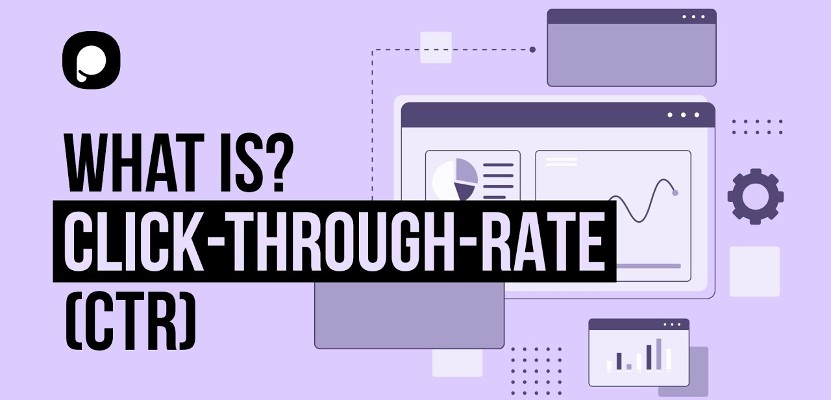CTR Manipulation Strategies: Proven Methods for Higher Involvement
Exploring the Partnership In Between CTR Adjustment Services and Customer Actions
In the realm of electronic advertising and marketing, the influence of click-through price (CTR) control solutions on customer behavior remains a complex and fascinating topic. As on-line platforms progressively count on CTR metrics to gauge the success of content, products, and solutions, comprehending how these controlled prices impact customer involvement and decision-making procedures is paramount. The interaction in between CTR manipulation and customer behavior elevates inquiries regarding credibility, trustworthiness, and the ethical implications of such techniques. By exploring the intricate relationship in between CTR adjustment services and user actions, intriguing insights arise that might reshape our understanding of electronic advertising methods and their impacts on customers.
Impact of CTR Control on Behavior
Assessing the influence of Click-Through Rate (CTR) manipulation on user actions discloses crucial understandings into the dynamics of online engagement. CTR adjustment includes artificially inflating the number of click a particular link or ad to deceive customers and search engines. This method can bring about an altered assumption of a page's popularity or significance, ultimately impacting customer actions.

Furthermore, CTR manipulation can alter the data used by formulas to individualize customer experiences. This can lead to customers being offered web content that does not line up with their preferences or passions, ultimately bring about a decrease in customer contentment and engagement. Understanding the influence of CTR control on user behavior is essential for maintaining transparency and trust fund in online communications.
Individual Interaction With Manipulated CTR
Customer involvement with manipulated CTR data typically brings about manipulated understandings of online content popularity and significance. When users interact with web content based on unnaturally filled with air Click-Through Rates (CTR), they may believe that certain details, items, or solutions are more prominent or trustworthy than they actually are. This can result in individuals making decisions based on misleading information, leading to potentially unfavorable results.
Interaction metrics like likes, shares, remarks, and time invested on a page are usually influenced by CTR control. Individuals might be a lot more likely to engage with web content that appears to have greater involvement rates, further continuing the cycle of skewed understandings. As an outcome, web content creators and marketers might prioritize creating content that creates high CTR rather than concentrating on creating truly important and relevant product.

Psychological Effects of CTR Adjustment

Additionally, the psychological effects of CTR manipulation can likewise show up in transformed decision-making processes. Customers might be extra inclined to click content only based upon its perceived popularity, rather than its real worth or significance to their needs. This behavior shift can cause a surface involvement with on the internet content, where users might overlook premium yet less prominent offerings in support of those with unnaturally increased CTRs.
In essence, the psychological ramifications of CTR control highlight the value of maintaining openness and authenticity in online interactions to foster real individual involvement and trust.
Honest Considerations in CTR Control
Considering the honest implications of manipulating click-through rates (CTR) in on the internet platforms is necessary for maintaining honesty and count on within the electronic environment. CTR manipulation elevates concerns concerning deceiving individuals, distorting data analytics, and jeopardizing the trustworthiness of on the internet web content. One major honest consideration is the potential influence on user freedom and decision-making. By synthetically inflating CTR, users may be deceived into clicking on links or advertisements they would not have picked or else, leading to a disingenuous online experience. CTR adjustment can skew the performance metrics that services rely on to make strategic decisions, ultimately affecting market competition and customer trust fund.
Another ethical element to ponder is the fairness of controling CTR to acquire an unjust benefit over rivals. Taking part in such methods not just violates concepts of fair game but also undermines the count on that individuals put in online systems. It is essential for businesses and digital marketing Source professionals to promote ethical standards in their methods to make sure transparency, credibility, and lasting sustainability in the on-line environment.
Implications for Digital Advertising
With the enhancing reliance on electronic systems for advertising functions, the practice of controling click-through rates (CTR) poses significant implications for the effectiveness and stability of electronic marketing methods. CTR control can cause skewed data analytics, deceiving marketing experts into thinking that their campaigns are carrying out far better than they really are. This can result in misallocation of sources, with companies purchasing underperforming strategies based on falsified CTRs. When users understand that CTRs have actually been adjusted, it can wear down trust in the brand, leading to long-term adverse effects for client commitment and brand credibility.
In addition, using CTR control services can produce an unjust affordable landscape, where companies that take part in such methods gain an artificial advantage over those that abide by honest advertising and marketing requirements. This can stifle technology and creative thinking in digital advertising, as success ends up being even more about adjustment tactics than supplying genuine worth to consumers. Ultimately, the implications of CTR manipulation for digital marketing prolong beyond temporary gains, impacting the total sustainability and reputation of advertising and marketing efforts in the digital see post realm.
Conclusion
To conclude, the partnership in between CTR control services and individual behavior is complex and complex. The effect of CTR manipulation on behavior, individual involvement with manipulated CTR, emotional impacts, moral considerations, and ramifications for electronic advertising and marketing all contribute in shaping this connection. Comprehending these dynamics is crucial for marketers and researchers alike in order to navigate the ethical ramifications and maximize the efficiency of their electronic advertising and marketing approaches.